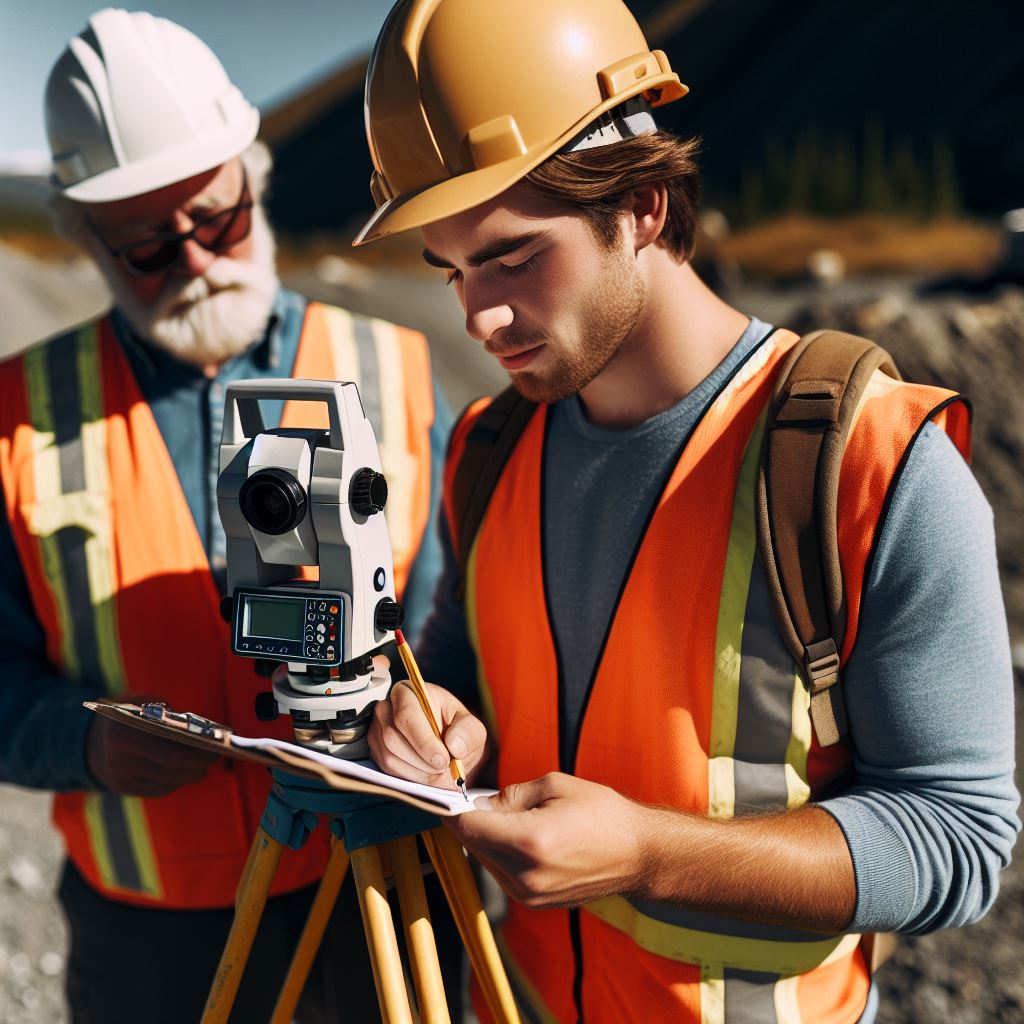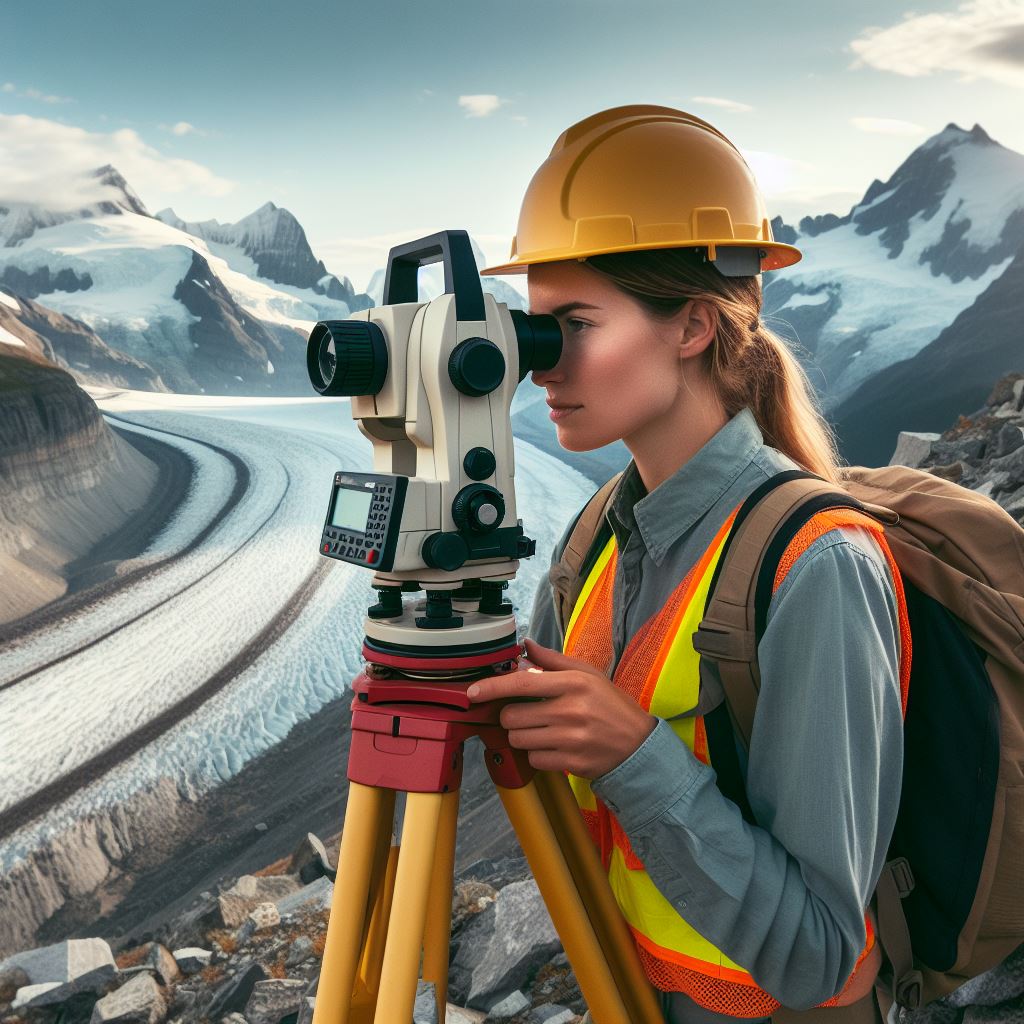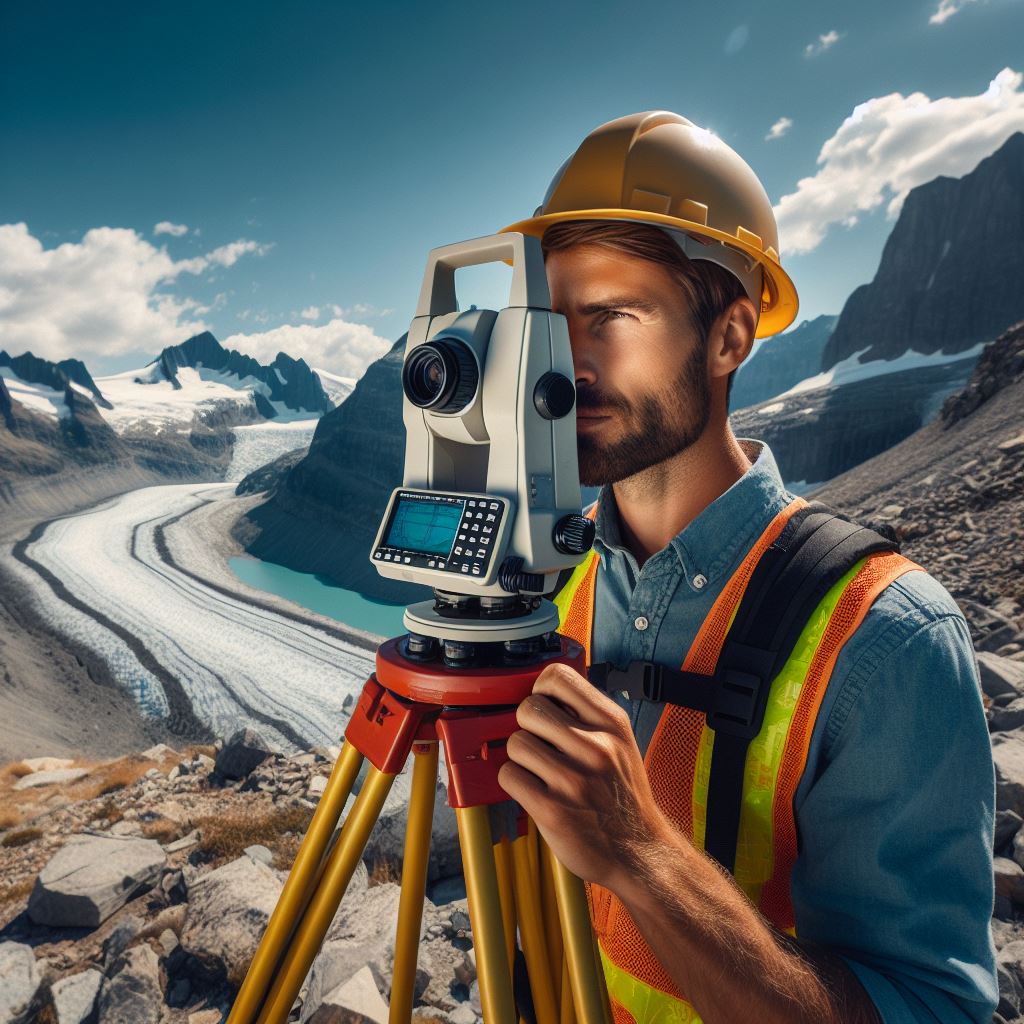Introduction
Surveying laws play a crucial role in Canada, ensuring property boundaries, land measurements, and land development adhere to legal requirements.
In this blog post, we will explore the key aspects of surveying laws in Canada, including their significance, major points covered, and their impact on property owners and developers.
Furthermore, the exploration extends to the pivotal role surveyors play in urban planning, resource management, and environmental conservation.
Understanding the legal nuances governing these areas is indispensable for professionals aiming to contribute meaningfully to sustainable development.
Delving into specific cases and precedents, we unravel the jurisprudence that shapes the surveying profession.
Additionally, this guide illuminates ongoing legislative developments, ensuring that readers stay abreast of the dynamic landscape of surveying laws.
With a focus on practical insights and real-world applications, this comprehensive overview serves as a beacon for both novices and seasoned surveyors navigating the complex legal tapestry that underpins their crucial work in shaping the physical and legal contours of Canada’s land.
Overview of Surveying Laws in Canada
The purpose and role of surveying laws in the Canadian context
Surveying laws in Canada play a crucial role in ensuring the accurate measurement and delineation of land boundaries.
These laws aim to uphold the integrity of property ownership and facilitate the development and management of land in the Canadian context.
The different levels of government responsible for surveying laws
There are three levels of government responsible for surveying laws in Canada: federal, provincial, and territorial.
Each level has its own set of legislations and regulations that govern surveying practices within its jurisdiction.
Federal Government
The federal government’s primary role in surveying laws is to establish the national geodetic and mapping framework, which provides a consistent reference system for land surveys across the country.
It is responsible for maintaining the National Spatial Reference System (NSRS) and geodetic datums
Under the authority of the Canada Lands Surveys Act, the federal government is also responsible for conducting surveys on federal lands, including Indigenous reserves, national parks, and territories.
Provincial and Territorial Governments
Provincial and territorial governments have jurisdiction over most of the land within their respective boundaries.
They are responsible for enacting and enforcing surveying laws that govern private land, Crown land, and municipal property.
These governments establish and maintain land survey systems, set standards for surveying practices, and regulate the qualifications and licensing of surveyors within their jurisdictions.
They also oversee the establishment of cadastral or land registration systems, which provide an official record of land boundaries and transactions.
The key legal frameworks that govern surveying in Canada
Several key legal frameworks shape surveying laws in Canada:
- The Land Titles Act or the Land Registration Act in each province and territory establishes the legal framework for land registration systems and defines the rights and interests in land.
- The Boundary Act or similar legislation provides guidelines for the establishment and maintenance of land boundaries.
- The Professional Surveyors Act or equivalent legislation sets out the requirements for surveyors’ qualifications, licensing, and professional conduct.
- The Expropriation Act or related legislation defines the process of acquiring land for public purposes and compensating landowners.
Furthermore, surveying laws in Canada are influenced by common law principles, such as adverse possession and easements, which govern land rights acquired through long-term use or agreements between landowners.
In short, surveying laws in Canada play a pivotal role in maintaining the accuracy and integrity of land boundaries.
The federal, provincial, and territorial governments work together to establish legal frameworks that govern surveying practices and ensure the orderly development and management of land across the country.
Read: How to Become a Surveyor in Canada: A Step Guide
Professional Requirements for Surveyors
Educational and Professional Requirements
- Completion of a recognized land surveying program is necessary.
- Applicants must pass the licensing exams administered by the provincial or territorial regulatory bodies.
- Some provinces require a specified number of years of work experience as a surveyor.
- Proof of good character and reputation, often through references, is typically required.
- Applicants may also undergo a criminal background check.
Surveying Associations and Regulatory Bodies
- The Association of Canada Lands Surveyors (ACLS) is a national organization representing land survey professionals.
- Each province and territory has its own regulatory body overseeing the surveying profession.
- Examples of provincial regulatory bodies include the Association of British Columbia Land Surveyors and the Association of Manitoba Land Surveyors.
Importance of Continuing Education and Professional Development
Continuing education and professional development are crucial for surveyors to stay current and maintain their licenses.
- Advancements in technology and changes in surveying techniques require ongoing learning.
- Continuing education courses and workshops provide opportunities to expand knowledge and skills.
- Professional development activities, such as attending conferences and seminars, offer networking and learning opportunities.
- Regularly updating knowledge and skills ensures the delivery of high-quality surveying services.
- Professional development also enhances surveyors’ credibility and reputation within the industry.
In fact, becoming a licensed surveyor in Canada requires fulfilling educational and professional requirements, passing licensing exams, and demonstrating good character.
Unlock Your Career Potential
Visualize a clear path to success with our tailored Career Consulting service. Personalized insights in just 1-3 days.
Get StartedProvincial regulatory bodies oversee the surveying profession, and the ACLS represents land survey professionals at the national level.
Continuing education and professional development play a vital role in keeping surveyors up-to-date with advancements and improving their skills.
By investing in ongoing learning, surveyors ensure their competence, credibility, and the delivery of quality services.
Read: Land Surveying: Key Tools and Technologies Used
Types of Surveys Regulated by Canadian Laws
The different types of surveys covered by Canadian surveying laws
Cadastral Surveys
Cadastral surveys are one of the types of surveys covered by Canadian surveying laws.
These surveys are specifically conducted to determine and define property boundaries.
For cadastral surveys, there are specific requirements and standards that must be followed.
Surveyors need to accurately measure and map the boundaries of land parcels, ensuring that they are properly marked and recorded.
When conducting cadastral surveys in Canada, surveyors must also consider legal considerations and restrictions.
They must adhere to relevant legislation, such as the Land Surveyors Act, to ensure the legality and validity of their surveys.
Topographic Surveys
Another type of survey covered by Canadian surveying laws is topographic surveys.
These surveys focus on mapping the physical features of a piece of land, including its elevation, contour lines, and natural or man-made features.
Similar to cadastral surveys, topographic surveys have specific requirements and standards.
Surveyors need to use accurate measurement techniques and instruments to ensure the precision and reliability of the collected data.
Legal considerations for conducting topographic surveys in Canada may involve obtaining necessary permissions or permits, particularly if the area being surveyed is environmentally sensitive or protected.
Engineering Surveys
Engineering surveys are also regulated by Canadian surveying laws.
These surveys are conducted to gather data and measurements necessary for engineering projects, such as the construction of roads, bridges, or buildings.
The specific requirements and standards for engineering surveys may vary depending on the nature and complexity of the project.
Surveyors must follow engineering principles and standards to ensure the accuracy and suitability of the collected data for the intended engineering purposes.
When conducting engineering surveys in Canada, legal considerations may involve adhering to relevant regulations and codes, obtaining necessary permits or approvals, and ensuring compliance with safety and environmental standards.
Geodetic Surveys
Geodetic surveys are another type of survey covered by Canadian surveying laws.
These surveys involve the measurement and mapping of large areas of the Earth’s surface to establish precise coordinates and reference points.
For geodetic surveys, specific requirements and standards related to positioning, measurement techniques, and data accuracy must be followed.
Surveyors must use advanced technologies and methods to achieve accurate and reliable results.
Legal considerations for conducting geodetic surveys in Canada may include obtaining necessary permissions or clearances from relevant authorities, especially if the survey area involves international borders or sensitive locations.
Boundary Retracement Surveys
Boundary retracement surveys are conducted to determine or reestablish property boundaries that may be unclear, disputed, or outdated.
These surveys aim to clarify and resolve boundary-related issues.
The requirements and standards for boundary retracement surveys in Canada involve examining historical records, conducting field investigations, and applying legal principles to determine the correct location of property boundaries.
When conducting boundary retracement surveys, surveyors need to consider any legal considerations or restrictions related to property rights, existing agreements, or legal disputes that may affect the survey outcome.
In essence, Canadian surveying laws cover various types of surveys, including cadastral surveys, topographic surveys, engineering surveys, geodetic surveys, and boundary retracement surveys.
Each type of survey has its specific requirements, standards, and legal considerations that surveyors must adhere to ensure accurate, reliable, and legally compliant results.
Read: The Daily Life of a Canadian Surveyor: An Insight

Restrictions and Limitations
Restrictions or limitations imposed by surveying laws in Canada
Surveying laws in Canada impose various restrictions and limitations to protect specific areas and Indigenous lands.
Protected areas, such as national parks and conservation zones, have strict surveying regulations.
Adherence to these restrictions is crucial to maintain the ecological and cultural integrity of these areas.
Surveyors must respect the boundaries and not encroach upon the protected areas during their operations.
Non-compliance with these restrictions can lead to severe consequences, including legal actions and penalties.
Surveyors found to be in violation may face fines, loss of license, or even imprisonment.
The potential consequences of non-compliance can tarnish a surveyor’s professional reputation and career prospects.
In addition to protected areas, surveyors must also consider Indigenous lands and their unique legal frameworks.
Indigenous communities have rights and title over their lands, which must be respected during surveying activities.
Surveyors should engage and consult with Indigenous communities to obtain necessary permissions and guidance.
Failure to acknowledge and adhere to Indigenous rights can lead to strained relationships and legal disputes.
The significance of adherence to these restrictions and the potential consequences of non-compliance
Understanding and accommodating the cultural and spiritual significance of the land is crucial in Indigenous territories.
Surveyors must be aware of any specific protocols or limitations set by Indigenous communities.
Respecting these restrictions fosters trust between surveyors and Indigenous communities.
It also ensures the preservation of cultural heritage and environmental stewardship.
Surveying laws in Canada aim to strike a balance between development and conservation needs.
Restrictions are in place to prevent irreversible damages to sensitive ecosystems and cultural landscapes.
Surveyors play a critical role in upholding these restrictions and ensuring sustainable land use practices.
By following the laws, surveyors contribute to the responsible development and growth of Canadian society.
Moreover, adherence to restrictions helps in the preservation of biodiversity and natural resources.
Surveyors should stay informed about any updates or changes in surveying laws and regulations.
Continuing education and professional development are essential to uphold the highest standards in the industry.
In general, surveying laws in Canada impose restrictions and limitations to protect various areas, including protected areas and Indigenous lands.
It is of utmost importance for surveyors to adhere to these restrictions to avoid severe consequences, including legal actions and damage to their professional reputation.
Respect for the boundaries and regulations of protected areas and engagement with Indigenous communities are crucial in ensuring sustainable land use practices and preserving the ecological and cultural heritage of Canada.
Read: Essential Skills for Canadian Architects
Find Out More: Mech Engineering Internships in Canada
Delve into the Subject: Mech Engineer Salaries Across Canada
Common Legal Issues and Challenges for Surveyors
Some common legal issues and challenges that surveyors face in Canada
- Boundary disputes can arise due to unclear property lines or conflicting land surveys.
- Surveyors may face legal challenges related to inaccurate surveys or errors in their work.
- Dealing with zoning and land-use regulations can be complex and may lead to legal issues.
- Environmental regulations and protection laws can impact surveying projects and pose legal challenges.
- Surveyors may encounter legal issues related to access to private properties for surveying purposes.
How surveyors can navigate and overcome these challenges
Surveyors can navigate and overcome legal challenges by:
- Ensuring accuracy and precision in their surveying work by following professional standards and guidelines.
- Maintaining clear communication with clients and stakeholders to clarify expectations and prevent potential disputes.
- Staying updated on relevant laws, regulations, and industry best practices to ensure compliance.
- Collaborating with legal professionals when necessary to address complex legal issues or disputes.
- Implementing quality control measures to minimize errors and mitigate potential legal liabilities.
Resources and tips for surveyors seeking legal guidance or support
For surveyors seeking legal guidance or support, the following resources and tips can be helpful:
- Professional Associations: Organizations like the Association of Canada Land Surveyors can provide legal resources and guidance.
- Legal Experts: Consult with lawyers specializing in real estate or surveying laws for specific legal advice.
- Continuing Education: Attend workshops, seminars, and courses to stay updated on legal developments and practices.
- Policies and Contracts: Develop and use comprehensive contracts and policies to clarify rights, responsibilities, and dispute resolution mechanisms.
- Insurance: Obtain professional liability insurance coverage to protect against potential legal claims.
By addressing these common legal issues and challenges proactively, surveyors can enhance their professionalism, protect their interests, and minimize potential legal risks.
Recent Developments and Future Trends
Recent Developments in Surveying Laws in Canada
- The Canadian government implemented the Geomatics Act in 2020 to regulate surveying activities.
- The act introduced new guidelines for surveyors, emphasizing the importance of accuracy and ethical conduct.
- In response to technological advancements, Canada updated its surveying regulations to incorporate the use of drones.
- There have been efforts to harmonize surveying laws across provinces to promote consistency in standards.
- The digitalization of land records has allowed for more streamlined processes in surveying and property transactions.
- Canada is actively collaborating with international bodies to adopt global best practices in surveying legislation.
Future Trends in the Field of Surveying
- Advancements in machine learning and artificial intelligence are likely to revolutionize surveying techniques.
- The integration of remote sensing technologies will provide surveyors with more accurate and efficient data collection methods.
- Automated surveying equipment, such as robotic total stations, will become increasingly prevalent in the industry.
- Virtual reality and augmented reality tools will enhance surveyors’ ability to visualize and analyze complex spatial data.
- The demand for specialized surveying services, such as environmental impact assessment and geodetic surveying, is expected to grow.
- The use of advanced GIS software will enable surveyors to analyze large datasets and produce more detailed and precise maps.
Impact of Changes in Surveying Laws on Surveyors and the Industry
The recent developments and future trends in surveying laws are set to have significant impacts on surveyors and the industry as a whole.
- Increased regulations and guidelines promote higher standards of professionalism and ensure the accuracy of surveying data.
- The integration of new technologies may require surveyors to upskill and adapt to changing methods of data collection and analysis.
- Surveyors who embrace technological advancements are likely to gain a competitive advantage in the industry.
- Harmonization of surveying laws across provinces will facilitate mobility and consistency for surveyors practicing across Canada.
- The digitization of land records and streamlined processes will improve efficiency and speed in property transactions.
- The adoption of global best practices will enhance the reputation of Canadian surveyors internationally.
- The demand for specialized surveying services offers opportunities for surveyors to diversify their expertise and expand their client base.
- The use of advanced GIS software enables surveyors to provide more detailed and customized spatial information to clients.
In a nutshell, recent developments in surveying laws in Canada, along with future trends in the field, are shaping the profession and its impact on the industry.
Surveyors must stay informed about changes, embrace new technologies, and continue to uphold high standards to thrive in this evolving landscape.
Conclusion
Understanding and complying with surveying laws in Canada are crucial. It ensures accuracy, legality, and protection for all parties involved.
Grasping Canada’s surveying laws is paramount. Understanding and compliance safeguard against legal repercussions.
Surveyors, both seasoned and novice, must prioritize adherence to these regulations.
The following encapsulates the essence of the discussion:
- Comprehensive Understanding: Appreciate the intricate web of surveying laws in Canada.
- Legal Compliance: Adherence is not just a choice; it’s a legal obligation.
- Risk Mitigation: By staying informed, surveyors mitigate legal and financial risks.
- Professional Guidance: Seek legal advice or professional input when uncertain.
- Ongoing Updates: Laws evolve; staying abreast of changes is pivotal for surveying success.
Emphasizing the significance of legal acumen, this chapter urges readers to proactively seek professional guidance to navigate the complex terrain of Canadian surveying laws.
By following these laws, surveyors can avoid legal issues and provide reliable data.
It is essential to seek legal advice or professional guidance when needed to ensure compliance and avoid legal complications.




